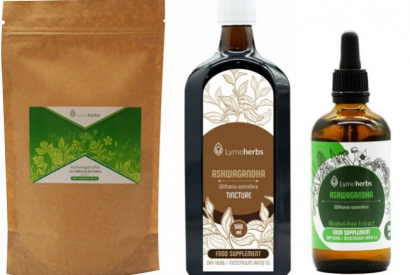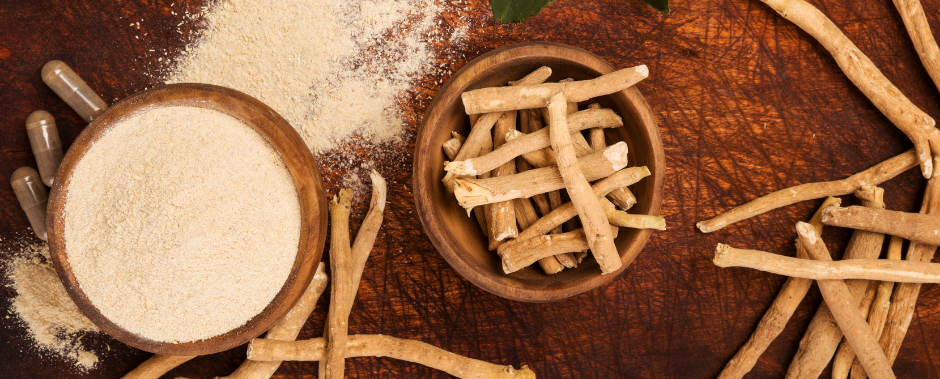
Ashwagandha
Ashwagandha (Latin Withania somnifera) otherwise known as winter cherry is a herb known for its calming properties and influence on the central nervous system. The plant belongs to the group of adaptogens, i.e. substances of natural origin that help in the adaptation of the body to maintaining homeostasis without showing major side effects. Due to those properties Buhner included this herb in his protocol for treatment of Lyme disease and co-infections.
Ashwagandha belongs to the Solanaceae family. It grows in India, Bangladesh, Nepal, Pakistan and Sri Lanka. The shrub reaches a height of about 150 cm, has yellow flowers and red berries. The root and fruit of this plant have healing properties.
Properties:
Ashwagandha is used in sleep disorders, neurosis, constipation, rheumatism or skin infections. The following properties are particularly during the treatment of Lyme disease and its co-infections:
- improves the functioning of the central nervous system
- detoxifying, cleansing the body of toxins
- remodulates and reduces the level of IL-10 cytokine and Th2 response, which allows for the reduction of many symptoms of Lyme disease and elimination of infection from the body
- anti-depressant, neutralizes stress and is considered an excellent mood stabilizer
- strengthens the immune system
- improves memory, excellent herb for concentration andsleep
- slows down the aging process
- neutralizes the free radicals circulating in the body, and in addition
- strengthens the functioning of the liver and kidneys.

Form of the herb:
The herb is sold in several forms:
1. Alcohol tincture
Alcohol-based plant tincture is made by macerating a fresh plant in full alcohol or a dried plant in a mixture of alcohol and water. Alcohol is an excellent medium for extracting herbs and due to this reason alcohol-based tinctures are the most popular form of herbal use by professional herbalists. Maceration of herbs with alcohol ensures that the active ingredients of the herb are delivered to the bloodstream faster, making the tincture a fast-acting form of taking the herb.
2. Alcohol-free extract
Non-alcoholic tincture is prepared primarily on the basis of glycerin. Glycerin has become a popular alternative to alcohol tinctures and is perfect for children and people who don't like or can't drink alcohol. However, glycerin is not as effective in extraction as water or alcohol. Glycerin only has about 60% of the alcohol extraction value. Cat's claw glycerate will therefore be 40% weaker than alcohol tincture but if you take higher dose is should have the same effect as alcohol based tincture.
3. Encapsulated herb
Capsules have become a very popular way to take herbs because they are an easy and convenient dosage form. One of the main advantages of the capsules is that we do not feel the taste of the herbs. Additionally, when taking the herb in the form of a ground herb enclosed in a capsule, you consume all the plant material along with the plant fibers. However, remember that along with the ground ashwagandha encapsulated in the capsule, you also swallow the capsule shell. The capsule shell does not contribute anything to the therapy and must be digested by the body. If you follow Buhner's Protocol you would need to consume large amount of capsules. In people with a weakened digestive system, this can be problematic with prolonged use of herbs.
4. Powder herb
Powder Ashwagadha can be taken directly, encapsulated or made into tinctures.
Direct use: add 1.5 - 3 g of the herb to a glass and pour lukewarm water or another drink on, stir and drink the liquid with the sediment.
Making tinctures at home: At home, it will be easiest for you to prepare a tincture in a concentration of 1:5, i.e. 1 part dried ashwagandha to 5 parts alcohol. Alcohol should be diluted with water due to the fact that plants lose their natural moisture during drying. When making tinctures of a dried plant, add as much water as the plant would contain if it were fresh. Then pour the herb with alcohol (50-60%) and then leave it for maceration for 2 weeks in a dark jar without access to light. Shake the jar daily. After 2 weeks, the macerate should be filtered. Store the finished macerate in a dark bottle or an ordinary bottle wrapped in aluminum foil in a place without access to light.
5. Cut herb
Cut herb is a dried form of ashwagandha cut into smaller pieces. You can prepare decoctions or tinctures from the cut herb.
Decoction: add 1-2 grams of the herb to a glass and pour 1 cup of boiling water and leave covered for 30 minutes. Drink 3 times a day, brewing fresh stock each time.
Side effects:
High doses of this herb can sometimes cause intestinal disorders such as loose stools, nausea, diarrhea, and / or abdominal pain.
Contraindications:
Ashwagandha can be a poor fertility aid. It is not recommended for pregnant women. Additionally, it may potentiate the effect of barbiturates. This herb should not be used with sedatives and anxiolytics.

 Boosting Your Libido Naturally with Herbal Supplements
Boosting Your Libido Naturally with Herbal Supplements
 Unlocking Energy Potential: Shilajit's Impact on ATP Production and Vitalit
Unlocking Energy Potential: Shilajit's Impact on ATP Production and Vitalit
 Collagen's Role in Lyme Disease Recovery: Understanding Its Vital Benefits
Collagen's Role in Lyme Disease Recovery: Understanding Its Vital Benefits
 Helicobacter Pylori- Natural Treatment
Helicobacter Pylori- Natural Treatment
 Sleep and Immunity
Sleep and Immunity